Discover 11 hidden attractions, cool sights, and unusual things to do in Jelenia Góra (Poland). Don't miss out on these must-see attractions: Chojnik Castle, Śląskie Kamienie, and Czeskie Kamienie. Also, be sure to include Jelenia Góra Valley in your itinerary.
Below, you can find the list of the most amazing places you should visit in Jelenia Góra (Lower Silesian).
Table of Contents
Chojnik Castle
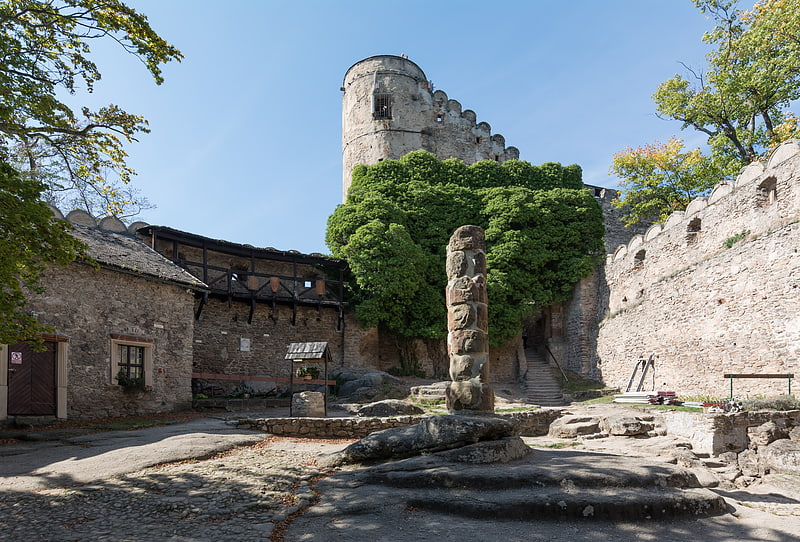
Also known as: Zamek Chojnik
Historic hilltop castle with a tavern. Chojnik Castle is a castle located above the town of Sobieszów, today part of Jelenia Góra in southwestern Poland. Its remains stand on top of the Chojnik hill within the Karkonosze National Park, overlooking the Jelenia Góra valley.
The building of the fortress dates back to the times of the Silesian Piasts and for most of its time was in the possession of the Schaffgotsch noble family. Today the semi-ruined stronghold is a major tourist attraction and houses a hotel and a restaurant.[1]
Address: Zamek Chojnik, Jelenia Góra
Śląskie Kamienie
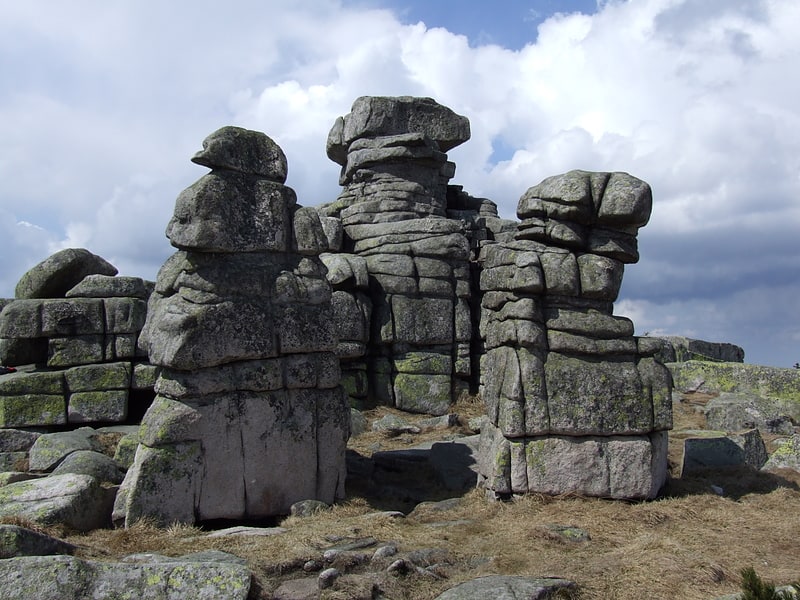
Rock formations on a mountain peak. Śląskie Kamienie or Dívčí kameny, 1,413 metres and Czeskie Kamienie or Mužské kameny, 1,416 metres is a twin peak and a rock formation situated in the western part of Karkonosze on Polish and Czech border within the Karkonosze National Park on the Polish–Czech Friendship Trail. The rocks are up to 8 m high.[2]
Czeskie Kamienie
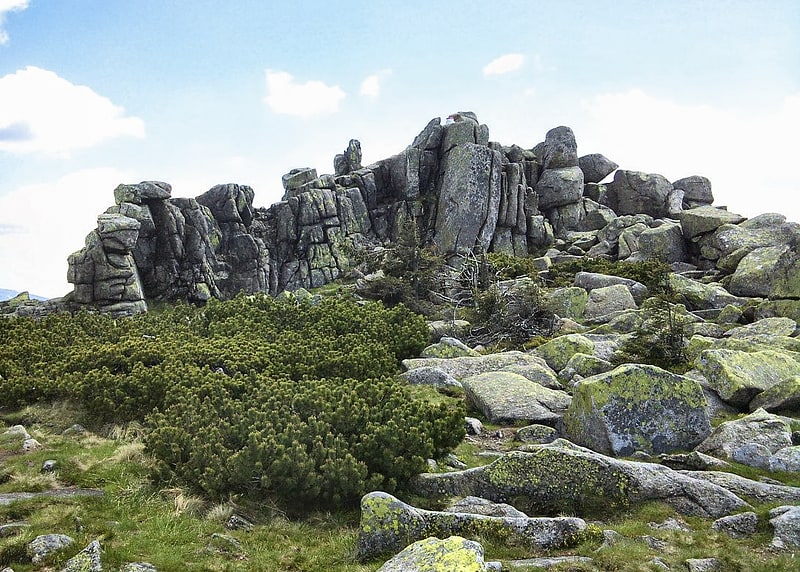
Peak. Czeskie Kamienie or Mužské kameny, 1,416 metres and Śląskie Kamienie or Dívčí kameny, 1,413 metres is a twin peak and a rock formation situated in the western part of Krkonoše on Polish and Czech border within the Karkonosze National Park on the Polish–Czech Friendship Trail. The rocks are up to 8 m high.[3]
Jelenia Góra Valley
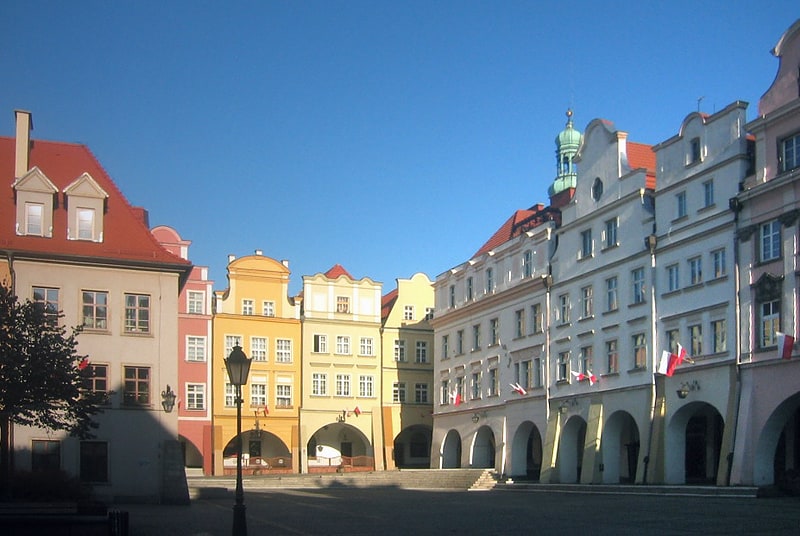
Also known as: Kotlina Jeleniogórska
Jelenia Góra Valley in Poland is a big valley at the Silesian northern side of the Western Sudetes and next to Kłodzko Valley the largest intermontane basin of the Sudetes. It is situated at an altitude of 250–400 meters above sea level and covers an area of 273 km2. In the 19th century, the lovely landscape attracted the Prussian high nobility, which built magnificent palaces, manors and parks. The enormous number of stately homes turned the valley into one of the most important garden landscapes in Middle Europe.
The palaces and landscape parks of the Jelenia Góra valley represent one of Poland's official national Historic Monuments (Pomnik historii), as designated September 20, 2011. Its listing is maintained by the National Heritage Board of Poland.[4]
Gerhart Hauptmann House
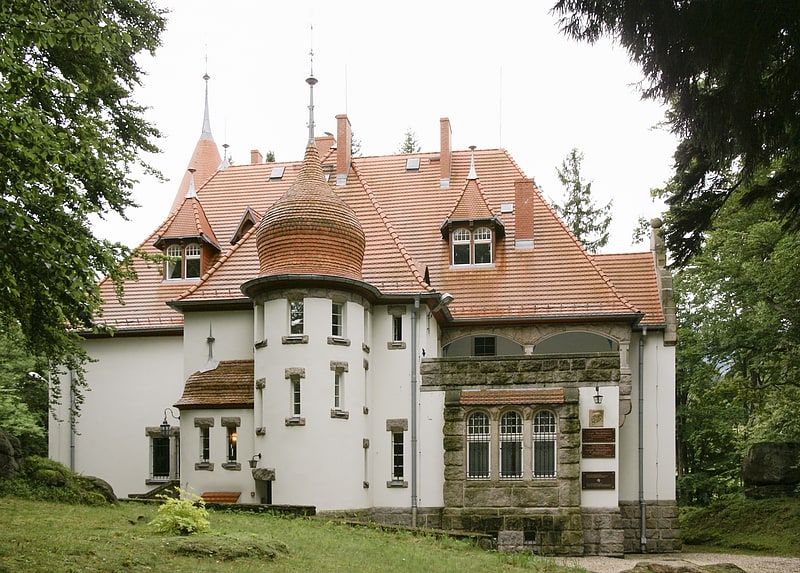
Municipal Museum "Gerhart Hauptmann's House" - a museum located in Jagniątków in a house belonging to German Nobel Prize winning writer Gerhart Hauptmann, built in 1901 to a design by Berlin architect Hans Grisebach.
Address: Michałowicka 32, 58-570 Jelenia Góra
Cyprian Norwid Theatre
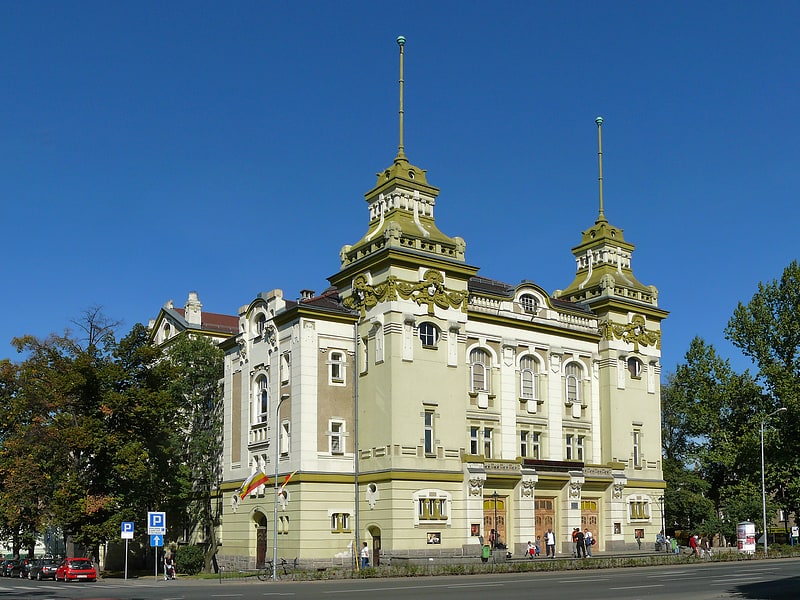
Also known as: Teatr im. Cypriana Kamila Norwida w Jeleniej Górze
Theatre in Jelenia Góra, Poland. The Cyprian Norwid Theatre in Jelenia Góra is a Polish repertory theatre founded in 1945. The Norwid Theatre in Jelenia Góra has two stages: Main Stage and Studio Stage. The theatre is named after Cyprian Norwid.
Polish actress and stage director Alina Obidniak was an intendant of the Cyprian Norwid Theatre between 1973 and 1988, as well as in year 2000. Obidniak invited many renowned theatre directors to Jelenia Góra, particularly Krystian Lupa, where he began his directing career with the production of Dainty Shapes and Hairy Apes by Witkacy (1978). She travelled with the theatre's productions across Europe and South America. In 1983, the Cyprian Norwid Theatre co-organised early Festival of Street Theatre in Jelenia Góra.[5]
Address: Jelenia Góra, Wojska Polskiego St. 36
Kościół Garnizonowy pw. Podwyższenia Krzyża Świętego
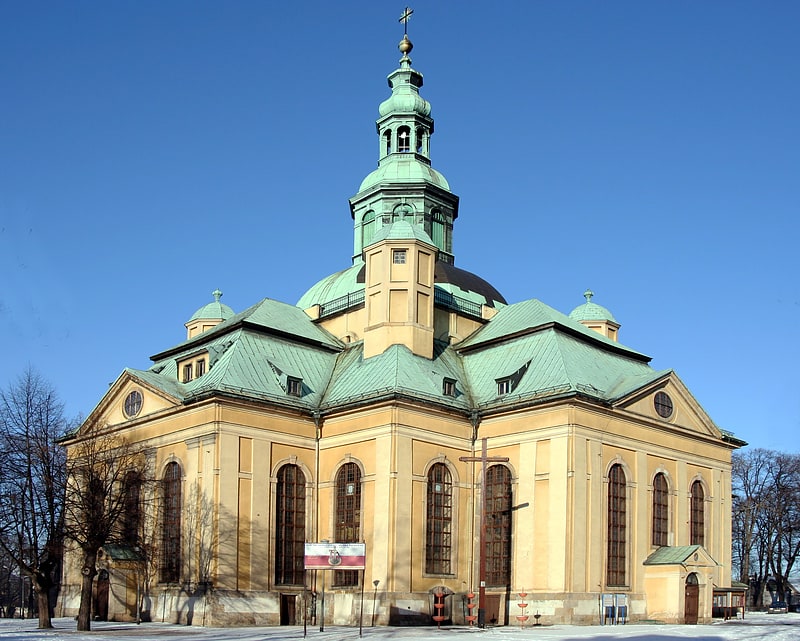
Church of the Elevation of the Holy Cross in Jelenia Góra - former Evangelical church of grace, after World War II and displacement of the German population taken over by the state and given to the Catholic Church. It is located in Jelenia Góra at 1 Maja Street.
It is surrounded by a park with 19 burial chapels of the town patricians, built in 1717-1770, i.e. in the period of lively flax trade.
Address: ul. 1 Maja 45, 58-500 Jelenia Góra
Kościół Ewangelicko-Augsburski Zbawiciela
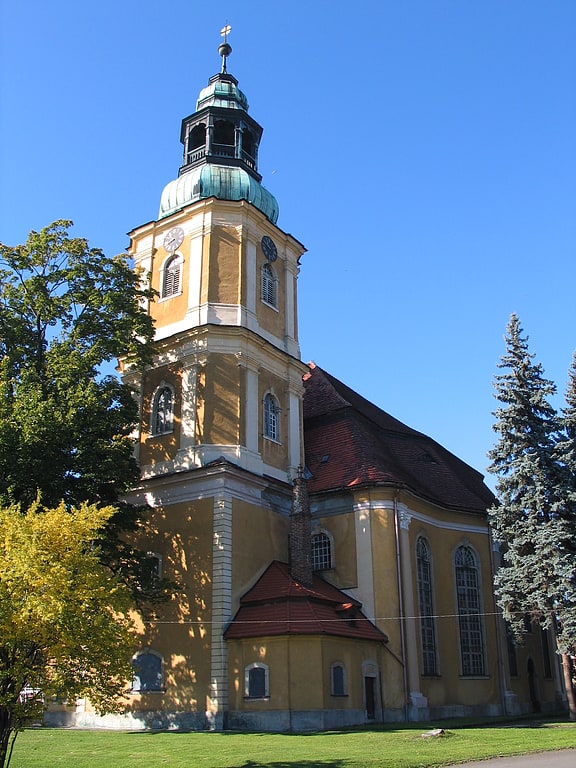
Church of the Savior - a parish church of the Evangelical-Augsburg parish belonging to the Diocese of Wrocław. It is located in Cieplice Śląskie-Zdrój, a district of Jelenia Góra.
This temple was built between 1774-1779 according to the project of Demus from Jelenia Góra. The building has a single nave and galleries. It is covered with a broken hipped roof. It is characterized by Baroque-classicist interior design.
During the summer, the site of organ concerts.
Address: plac Piastowski 18, 58-560 Jelenia Góra
Muzeum Przyrodnicze
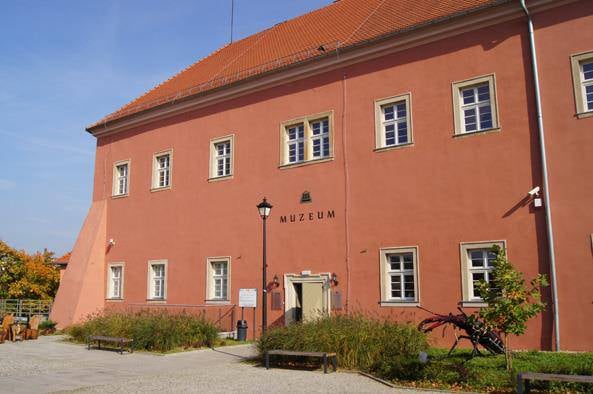
Museum
Address: Ul.Cieplicka 11A, Jelenia Góra
Kościół Parafialny pw. Świętego Jana Chrzciciela
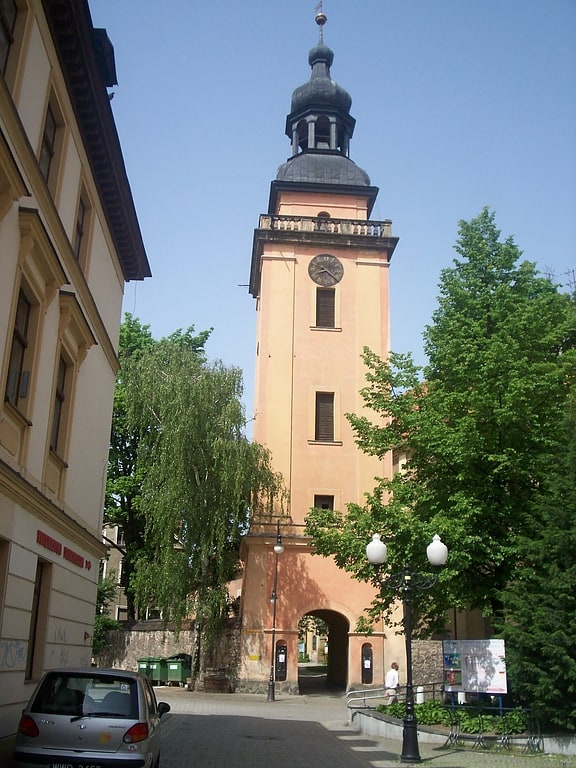
St. John the Baptist Church in Jelenia Góra-Cieplice - was mentioned as early as 1318. The present baroque building comes from 1714. It is a one-nave rectangular building covered with a barrel vault, with side chapels and galleries. It has a rich Baroque interior design from the years 1714-1793. The most valuable monuments in the church are: the painting of the Blessed Virgin Mary by Michael Willmann from 1687 decorating the main altar, which is flanked by sculptures of St. Peter, John the Baptist, John the Evangelist and Paul. There are also three canvases by Johann Franz Hoffmann, entitled Prayer in the Garden of Olives, Lamentation and Christ in the Abyss. The pulpit with bas-reliefs depicting scenes from the lives of the church patrons, the altar of the 14 Intercessors from 1716-1717, 12 paintings attributed to Willmann between the pillars in the galleries, and the rococo outer portal from 1779. On the eastern façade, tombstones of the Plaks W. Mielecki from 1829 and T. Rzepecki from 1838. In the niches, figures of St. Gotard and St. Placid.
In the churchyard there is a free-standing bell tower from 1710 and a Baroque votive column decorated with a statue of St. Florian from 1713. In the inner part of the church wall there are tombstones of the Schaffgotsch family from the years 1579-1624, transferred in 1849 from the church in Radomierz. The portal of the garden gate is crowned with the rococo sculpture of the Adoration of the Blessed Sacrament by St. Bernard and St. Juliana from 1781. In the northern courtyard there is a baroque statue of the Holy Trinity from 1724, flanked by the statues of St. Hubert from 1785 and St. Sebastian from 1786, which was placed in place of the linden tree knocked down in 1697, under which the act of foundation of the monastery was performed in 1403.
Address: Cieplicka 9, 58-560 Jelenia Góra
Bazylika mniejsza pw. św. Erazma i św. Pankracego
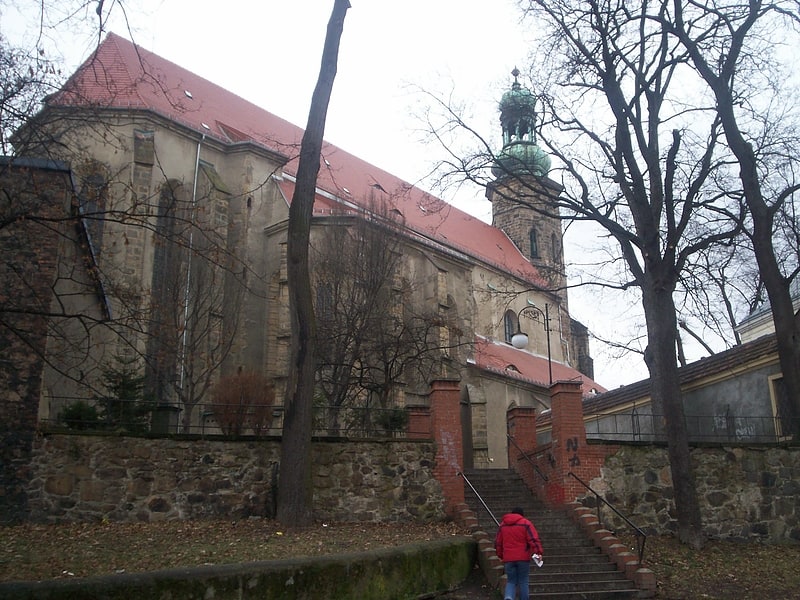
Basilica of St. Erasmus and St. Pancras in Jelenia Góra - is an oriented, Gothic three-nave, four-bay basilica first mentioned in 1303 after its fire, rebuilt still in the 14th century, rebuilt in the 15th and 16th centuries. The oldest and most important temple in the city. A typical example of a Gothic church with sharp-arched door and window frames, cross-ribbed vault and buttresses.
The basilica has three naves 56 m long, the main nave is 24 m high. The 52 m high Renaissance tower from the beginning of the 16th century was rebuilt after a fire in 1549, and in 1736 it was covered with a Baroque cupola.